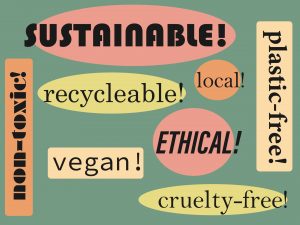About six months ago, I took an Uber home from my favorite skatepark. Like most Uber rides, my driver made awkward small talk with me. While driving down Poinsett Highway, she asked me “So you go to Furman? What do you study?.” I hesitated for a moment. Whenever I tell any adult stranger my major, I always get this funny look. But she was driving so as long as I didn’t look at the rearview mirror, I could avoid the look of disapproval.
“Political science and Sustainability” I replied. I couldn’t resist. I had to look in the mirror.
With a raised eyebrow she said “Politics and Sustainability? Isn’t that like “big shrimp”?”
My Uber driver was catching on to the same thing I noticed since I started to take sustainability more seriously: the implied oxymoron between politics, the economy, and environment.
Everyday I am reminded of the tension between these different parts of life. When I pass the Earth and Environmental Science department, I stop to read the Guy McPherson quote on the wall: “If you really think the environment is less important than the economy, try holding your breath while you count your money.”
I understand where McPherson is coming from. It is hard to watch politicians like Majorie Taylor Greene bring Scooby Doo memes about the Green New Deal into Congress and try to take it seriously. I often think that stupidity will kill us before climate change does.
However, can two things be true at once? Can you care about the economy and the environment at the same time?
I think so. The way we have been treating our planet will have long term effects that are economically detrimental to our fast-paced and ever growing world. Making the changes necessary to protect our planet will not only limit the irreversible damage to ecosystems but can also be financially advantageous to businesses of all kinds. From the local mom and pop restaurant to the major corporation, being sustainable can save money.
There is one important caveat: cost-benefit analysis. Because of the current structure of our society and the way things are manufactured, there will always be instances where it is more expensive to be sustainable. However, it doesn’t take much to see how sustainability can, in certain circumstances, be financially advantageous.
For example, getting the bigger bag of dog food at the store is not only cheaper per ounce but once you are done with the bag, you can reuse it as a big trash bag. That is one less trash bag you have to pay for. Also because you bought a bigger bag, you don’t have to buy another bag for a while. This is just one simple thing my family does to save money and be sustainable at the same time.
Instead of wasting food that you didn’t end up eating, you can compost it. If you throw it away, you spent money on something you didn’t eat and it serves no purpose outside that. If you compost it, you did spend money on something you didn’t eat but you saved money with a natural and free way to enrich the soil in your backyard. Instead of rebuying the same pack of utensils for your dorm room each month, go to Goodwill and pick up a cheap cutlery set. They will last a long time and that is one less purchase for the broke college kid. If it is nice outside, walk to your next destination. With gas prices this high, it is good to conserve any bit you can.
Investing in sustainable infrastructure can also help stimulate the economy. America has a transportation problem and if we invested in electric trains/buses, more people could get to their jobs and the cost to transport the most people at once goes down. The return on investment is quite clear.
These are just a few examples of how being sustainable can be cost-effective. As you go about your day, challenge the way you view sustainability and its relationship to the economy. Sustainability isn’t just a thing for rich people: being green can be accessible and affordable. Who knows, you might even save some money while you’re at it!


 om baked in the oven. There are so many delicious, easy recipes for pumpkin seeds. Feeling savory? Try
om baked in the oven. There are so many delicious, easy recipes for pumpkin seeds. Feeling savory? Try  our skin, get rid of it and give back to the earth it came from. By composting your pumpkin instead of si
our skin, get rid of it and give back to the earth it came from. By composting your pumpkin instead of si


